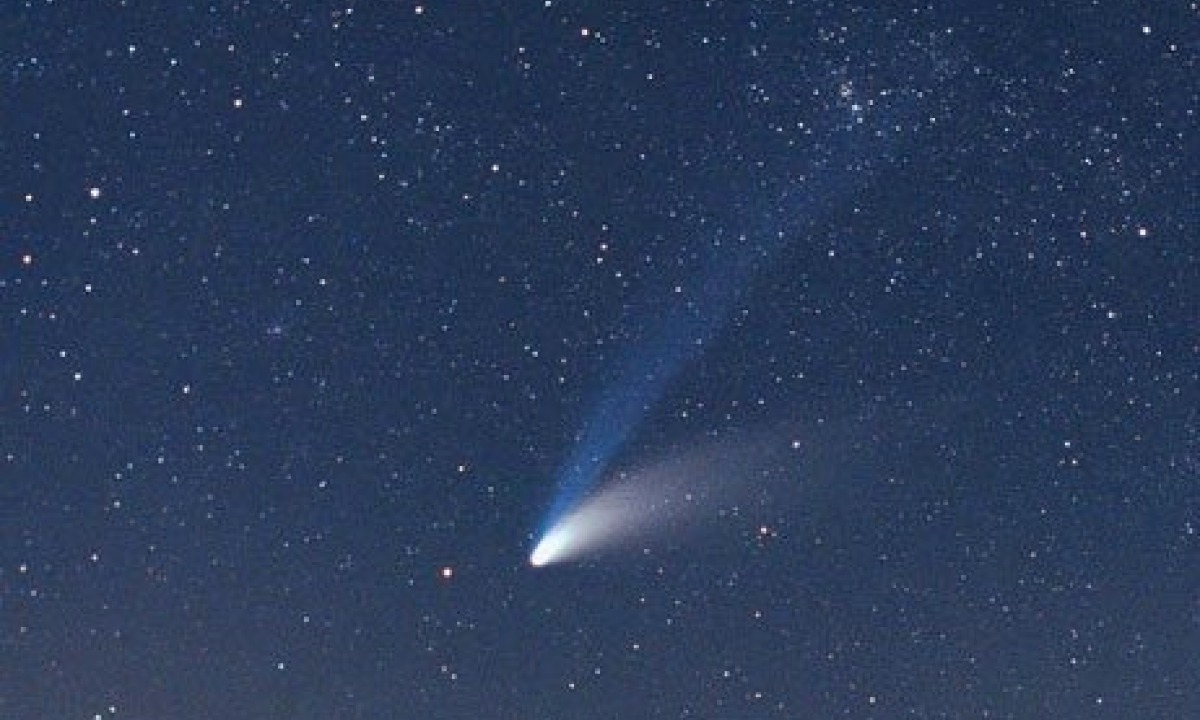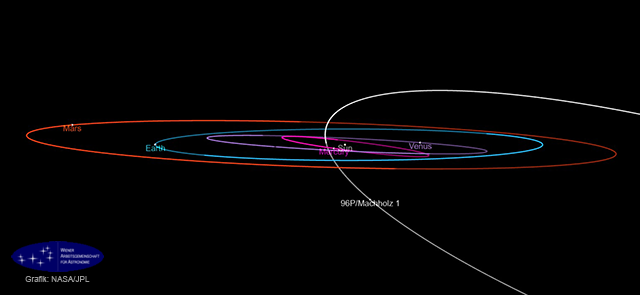Just before the green comet C/2022 E3 ZTF made its closest flyby of the Earth for the first time in the last 50 thousand years, on January 31, an unusual large comet flew past the Sun, which turned out to be even larger than ZTF.

Most short-period comets flying at a very short distance from the Sun are about the size of a house, and eventually evaporate during their daring passage past our star. Comet 96P/Machholz is strikingly different in its size – it is six kilometers across and looks more like an entire city. But the most interesting thing is that it can be “alien”.

Astronomer David Schleicher from the Lowell Observatory in Arizona, measured the chemical composition of 150 comets and found that they all had the same equal content of chemical cyanide (CN). All with the exception of 96P/Machholz, which had a content of this substance less than 1.5% of the normal level. The comet also has a low content of C2 and C3 molecules. One explanation is that it may have come from outside the Solar System, that is, interstellar.
SOHO Observation
The progress of 96P/Machholz towards the Sun is observed with the help of NASA’s SOHO Solar Observatory, which provides fairly detailed visual information. Based on the images, a slow-motion video of the comet passing by the Sun was created.
So @SungrazerComets pointed out Comet 96P on SOHO, so I could not resist the need for a time-lapse. https://soho.nascom.nasa.gov/data/Theater/ pic.twitter.com/lUGsI9LJtC
— Ron Murphy (@isixtyfive) January 31, 2023
Most comets passing so close to the Sun often don’t survive. But 96P was obviously big enough to survive after such a risky maneuver. However, astronomers tracked that large fragments broke off from the comet’s nucleus a few days before perihelion.
Only in recent years astronomers have documented the presence of interstellar comets visiting our surroundings. There were only a few such “alien guests” during the entire observation period. 96P/Machholz has a great chance of becoming one of them: the strange trajectory of the comet, which brought it very close to the Sun; the obviously low carbon and cyanide content are just some of the reasons why researchers suggest that it may have come from outside the Solar System.
Earlier we explained why comet C/2022 E3 ZTF attracted so much attention.
Follow us on Twitter to get the most interesting space news in time
https://twitter.com/ust_magazine

